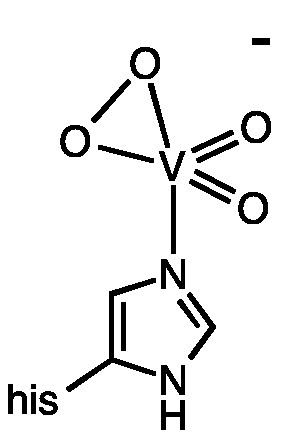 | ||
Vanadium bromoperoxidase are a kind of haloperoxidase that is involved in the bromination of organic compounds associated with defense and pigmentation in seaweeds and marine algae. These enzymes produce the bulk of organobromine compounds in the world.
Vanadium bromoperoxidase are one of the few classes of enzymes that require vanadium. The active site features a vanadium oxide center attached to the protein via one histidine side chain and a collection of hydrogen bonds to the oxide ligands.
Occurrence and function
Vanadium bromoperoxidases have been found in bacteria, fungi, and marine macroalgae (seaweeds) which produce brominated compounds. It has not been definitively identified as the bromoperoxidase of higher eukaryotes, such as murex snails, which have a very stable and specific bromoperoxidase, but perhaps not a vanadium dependent one.
The enzymes catalyse the oxidation of bromide (0.0067% of sea water) by hydrogen peroxide. The resulting electrophilic bromonium cation (Br+) attacks hydrocarbons (symbolized as R-H in the following equation):
R-H + Br+ + H2O2 → R-Br + H2O + OH−The bromination acts on a variety of organic substrates. The vanadium bromoperoxidases produce an estimated 1–2 million tons of bromoform and 56,000 tons of bromomethane annually. Most of the earth's organobromine compounds arise by the action of this enzyme. The enzyme forms singlet oxygen in the absence of the appropriate organic substrates.
